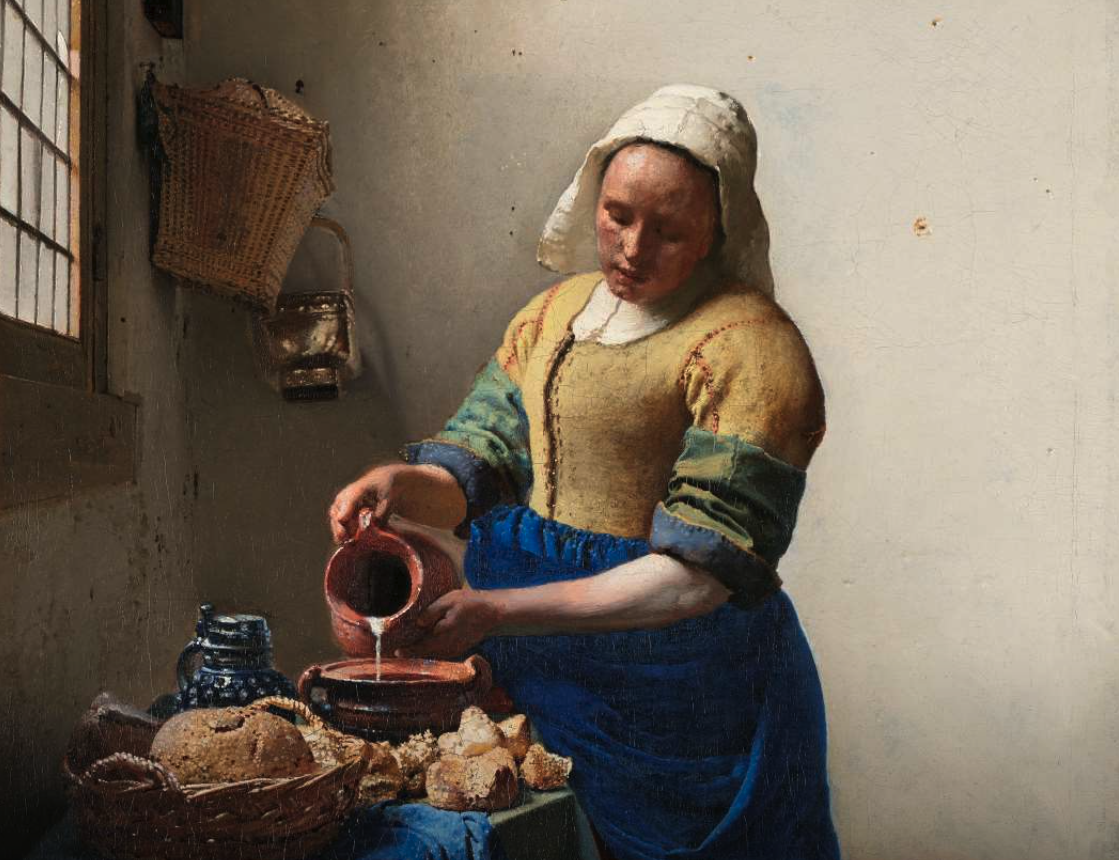Visiting Museums in the Age of COVID
Global Art World Touring with the Click of a Mouse

To cop and tweak a cliché, what would John Baldessari think? Had the famed, incurably irreverent patron saint of conceptualism lived into the present COVID-19 age (he passed on January 2 of this year), what might he consider of the artworld’s forced move indoors and online? Ever attuned to rethinking and upending artworld values, he might have embraced the opportunity to take his sublimely pranksterist impulses — so beautifully laid out in LACMA’s 2010 retrospective Pure Beauty — as an invitation to reshape museum principles. Add this to the list of countless questions swirling in the virus-ized cultural air.
Culture has taken a beating and a holiday, like it or not, during the shelter-in-place era. It’s a painful and startling shift, certainly for artists of all disciplines (especially the real-time realms of musicians and theater) and also the multitudes who thrive on and even make something of a living from reporting/critiquing on said arts. That, of course, includes the fine arts, in whose hallowed houses of museum spaces and galleries have been shuttered.
The online surrogate exhibition experience, however comparatively pale and “mitigated” — to borrow a current term — an experience, at least serves as a reminder and a palimpsest of what art can be, as healing and challenging stimuli. To boot, this is a ripe opportunity to tour the world’s art spaces, with mouse and drink-of-choice at the ready. Many museums have committed to exploring new online possibilities, and Google’s “street view” 3-D eyeballing scheme suffices to give us a taste, elsewhere.
A fine place to start a virtual museum sojourn is by going MoMA (Museum of Modern Art), a Mecca of culture in America’s Covid-ravaged cultural epicenter of New York City. More specifically, start by visiting Jean Tinguely’s Homage to New York: A Self-Constructing and Self-Destroying Work of Art, circa 1960. The Swiss kinetic sculptor’s surreal charms and funkily playful antics, on the theme of post machine-age machinations, are worth a pilgrimage, before delving deeper into MoMA’s online resources.
One of the more have-to-be-there museum spaces in NYC, of course, is the Frank Lloyd Wright-designed Guggenheim, with its unique spiral design and the almost ritualistic experience of taking in art on the walk down and around the space, vs. the traditional art abiding the time-honored “network of galleries” system. Via the virtual tour scheme of this indoor “street view,” short of the critical circumambulating process, the roving and scrolling mouse can give a modicum if woozy approximation of being there. Peek at works by Catherine Opey, Matthew Barney, and Iván Navarro’s Homeless Lamp, the Juice Sucker, an illuminated shopping cart, with eerie resonances of homeless life circa the past two months.
On transatlantic turf, stop by the superlative art destination that is Amsterdam’s Rijksmuseum, and have a visit with Vermeer’s 1660 masterpiece The Milk Maid, a poetic essay in luminosity, formal gleam and domesticity — an icon for the sheltering-in-place era. The sumptuous splendor of the Dutch Masters, including Rembrandt’s Night Watch and Self-Portrait as the Apostle Paul, makes for an effectively transportive experience, under the circumstances.
Drop down to the once and future art hub of Paris: the Louvre boasts an elaborate online tour, from an informative Mona Lisa (with “observe,” “understand” and “compare” tabs under the web page) to tours of specific galleries and exhibitions, such as Founding Myths, from Hercules to Darth Vader.
On a more contemporary track, venture across the Seine river to the Centre Pompidou (aka Beaubourg), where online treats include a downloadable game, Prisme 7, inviting players to “explore the main principles of artistic creation: observe, learn, deconstruct and create.”
Veering back homeward to SoCal, we can easily pop by favorite destinations in L.A., sans traffic or potentially viral crowds. The Getty Center is there for the clicking/viewing — enjoy the art, but here especially, we miss the sleek extravagance of the “being there” its view-endowed campus. And LACMA, the behemoth venue by Miracle Mile, beckons, with a series of films, online courses and lectures, audio and readings, as well as extensive access to current shows and the permanent collection. We can even pay respects to the late Baldessari, via LACMA’s holdings . Check out, for instance, his 1988 lithograph The Studio, part of the artists’ series with faces/identities blotted out by monochromatic spheres, a detachment scheme which makes it seem a relevant icon in our present Age of Detachment.

We may desperately miss the being there and the living feel and pulse of culture. But thanks to online art space-hopping, we can still peer into secret windows and portals into what lurks in galleries and vaults — and hopefully will available in real-time/real space before long.
At the Santa Barbara Independent, our staff continues to cover every aspect of the COVID-19 pandemic. Support the important work we do by making a




You must be logged in to post a comment.